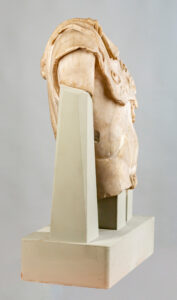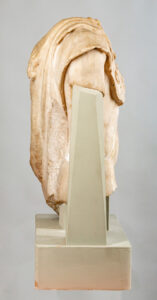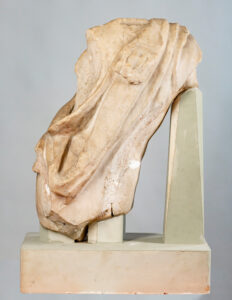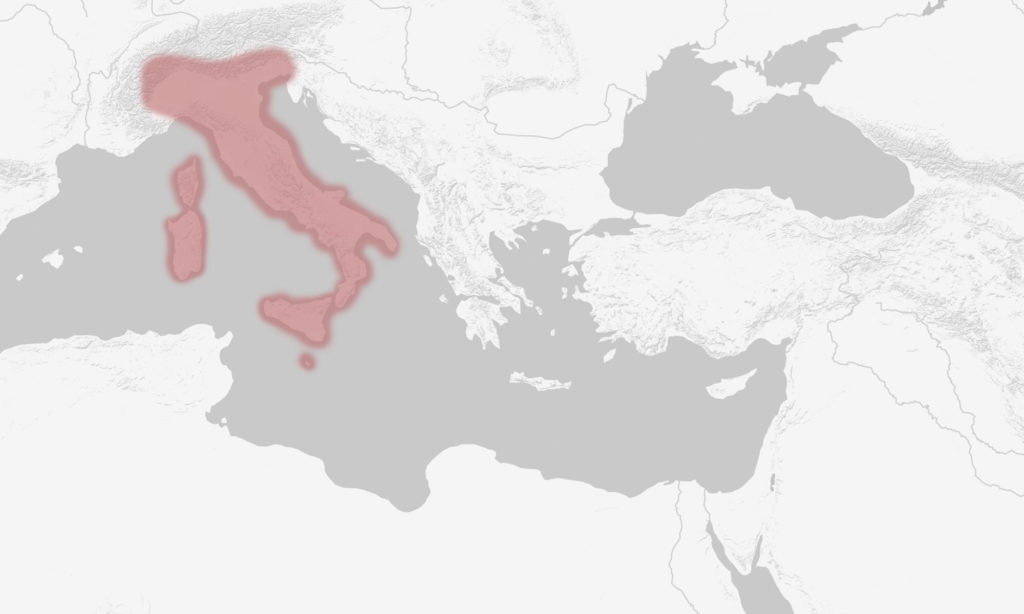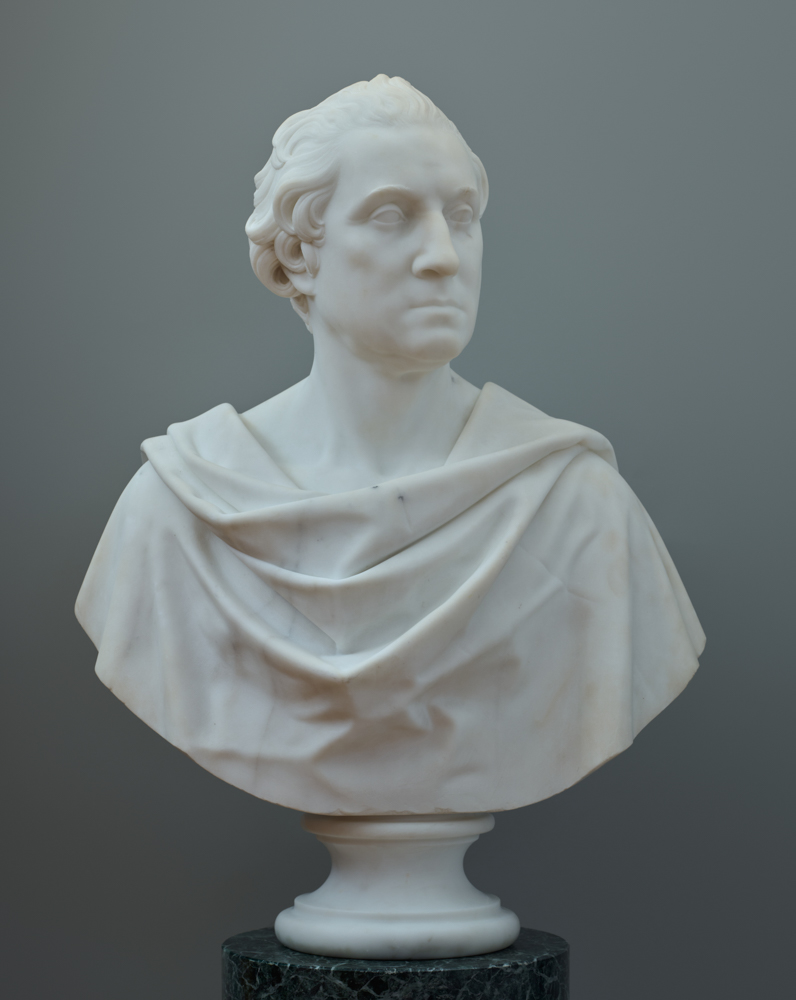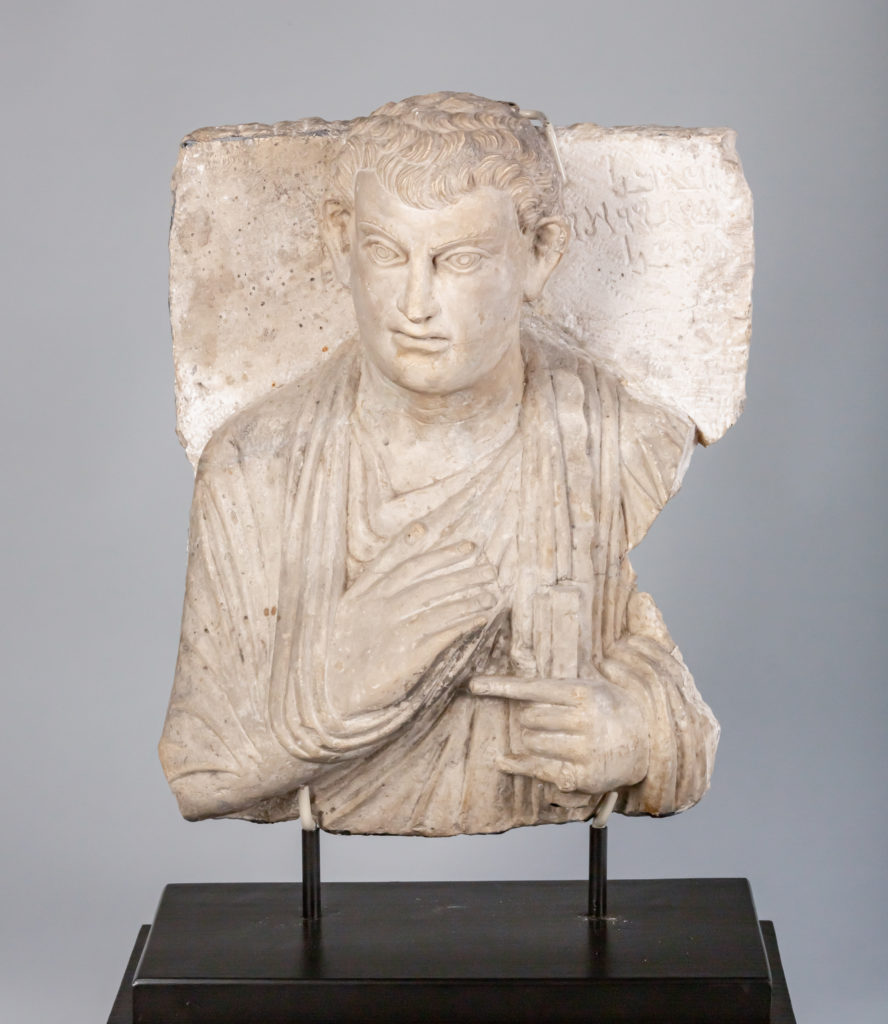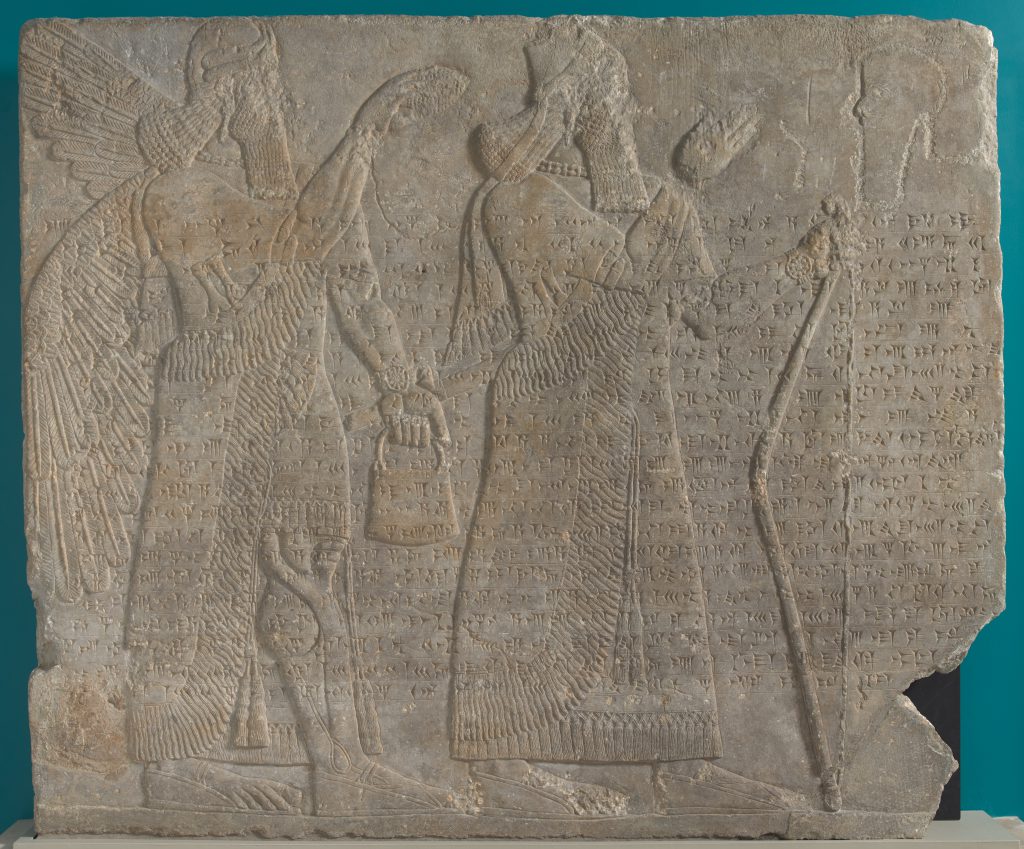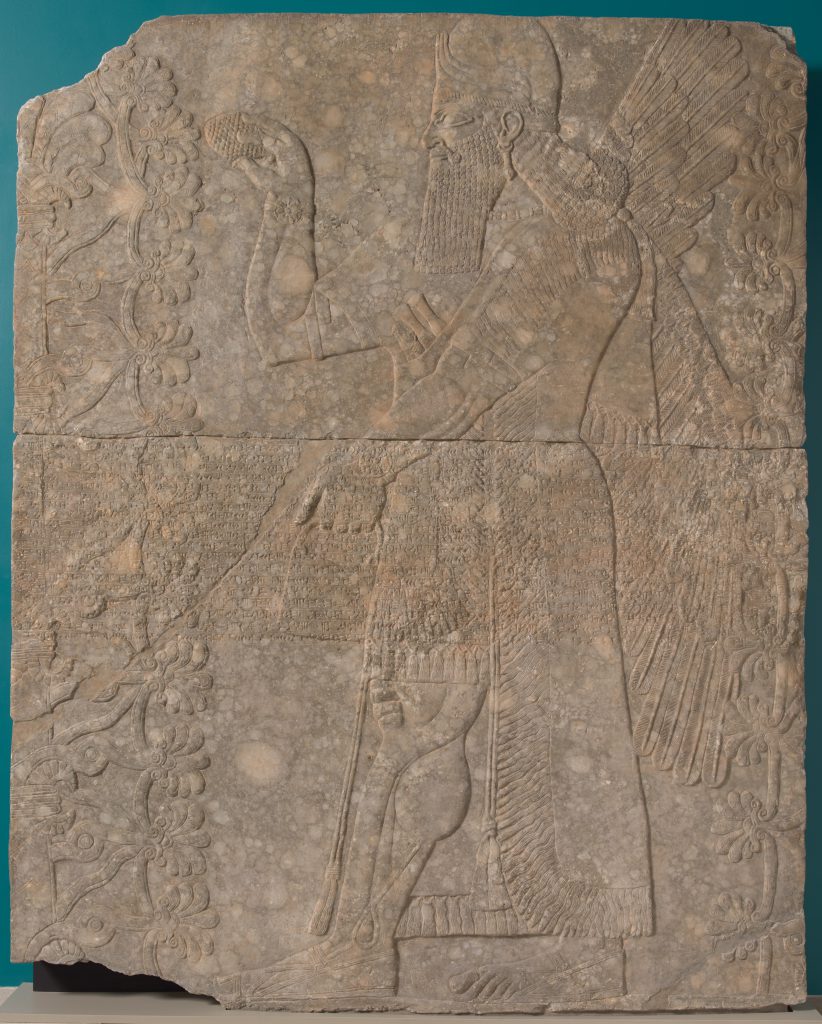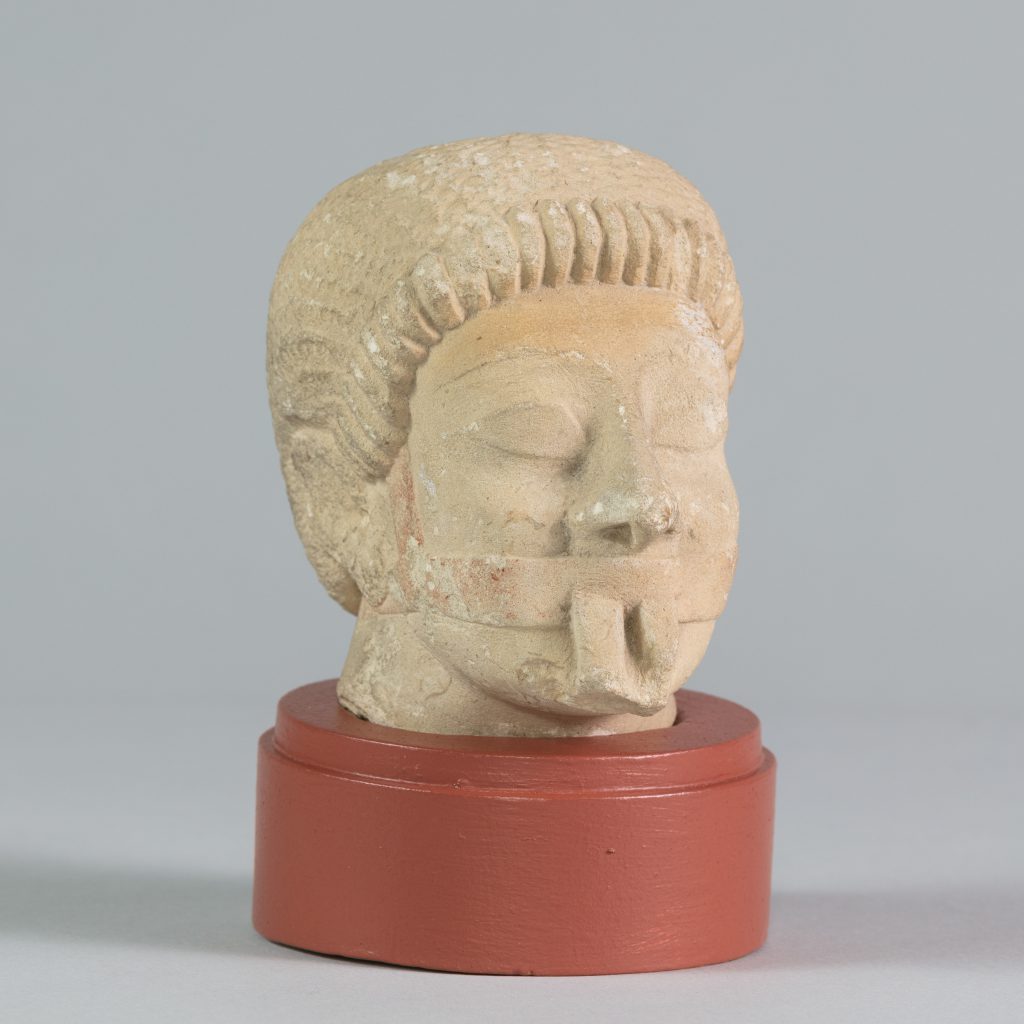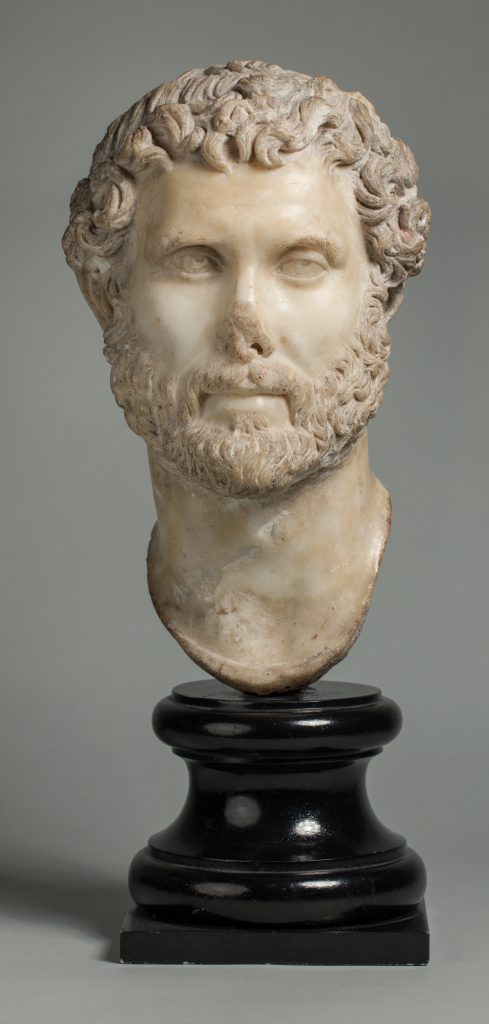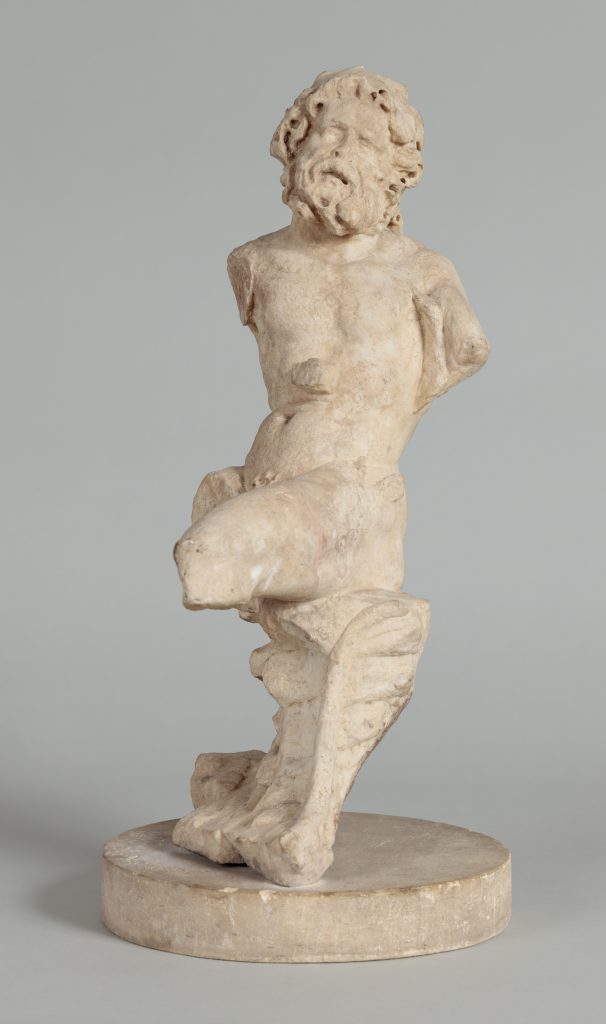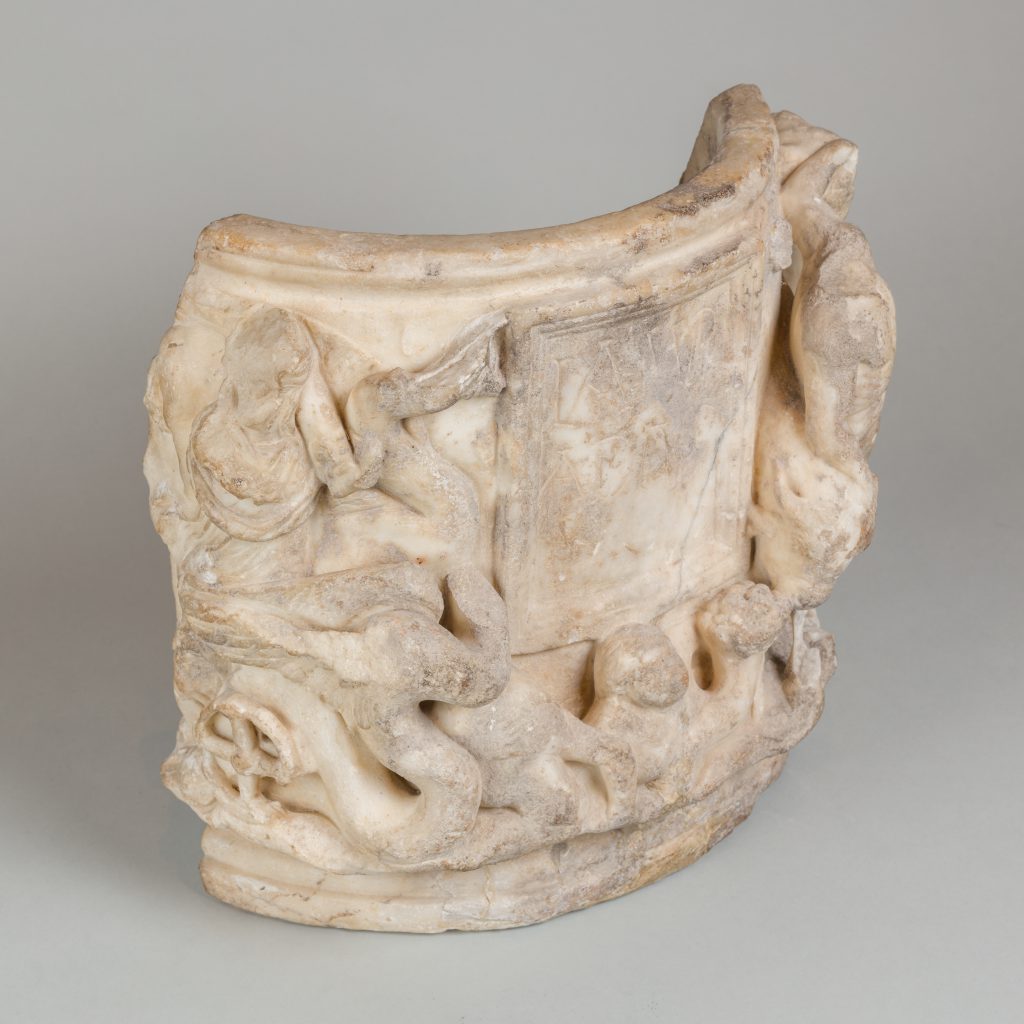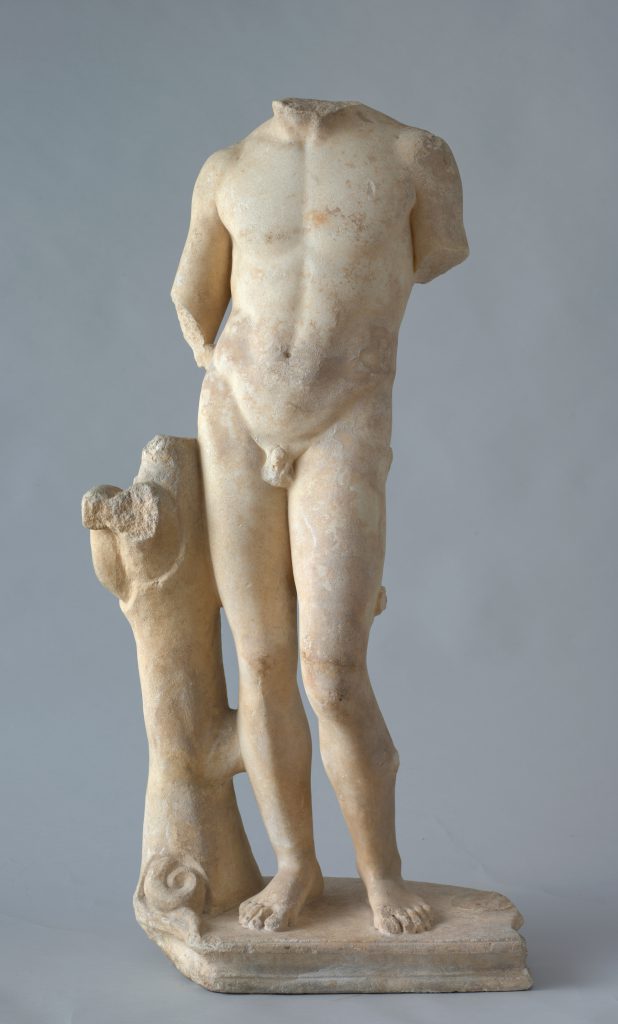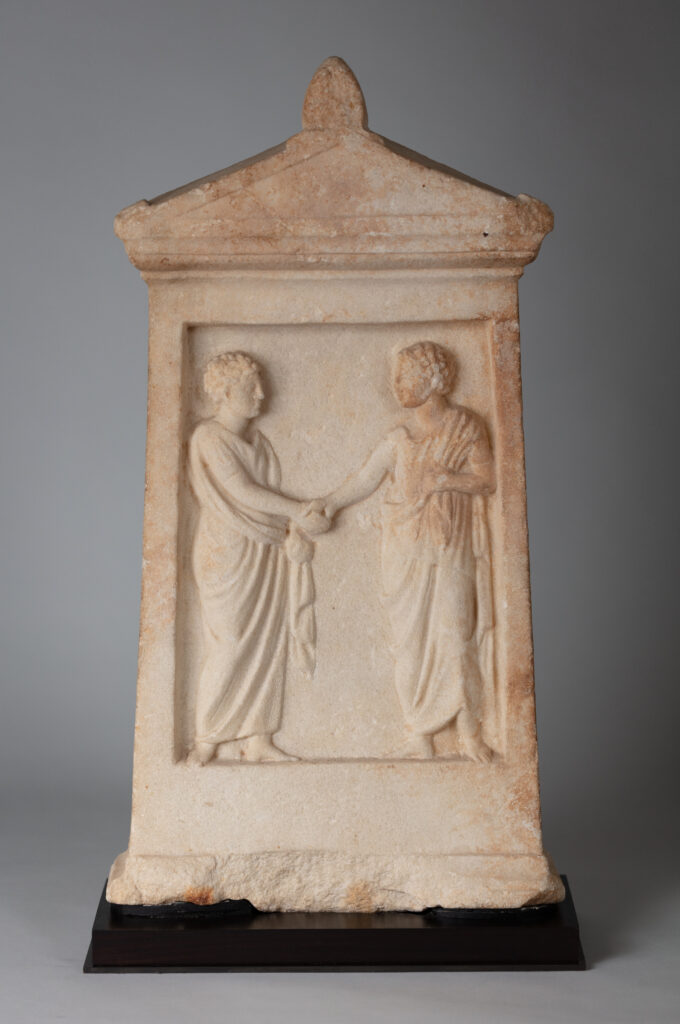

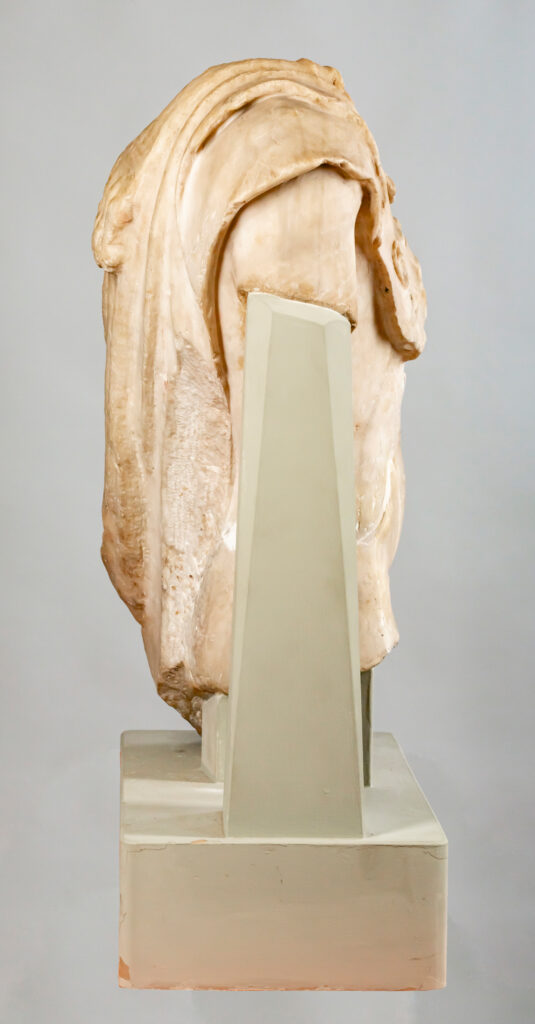
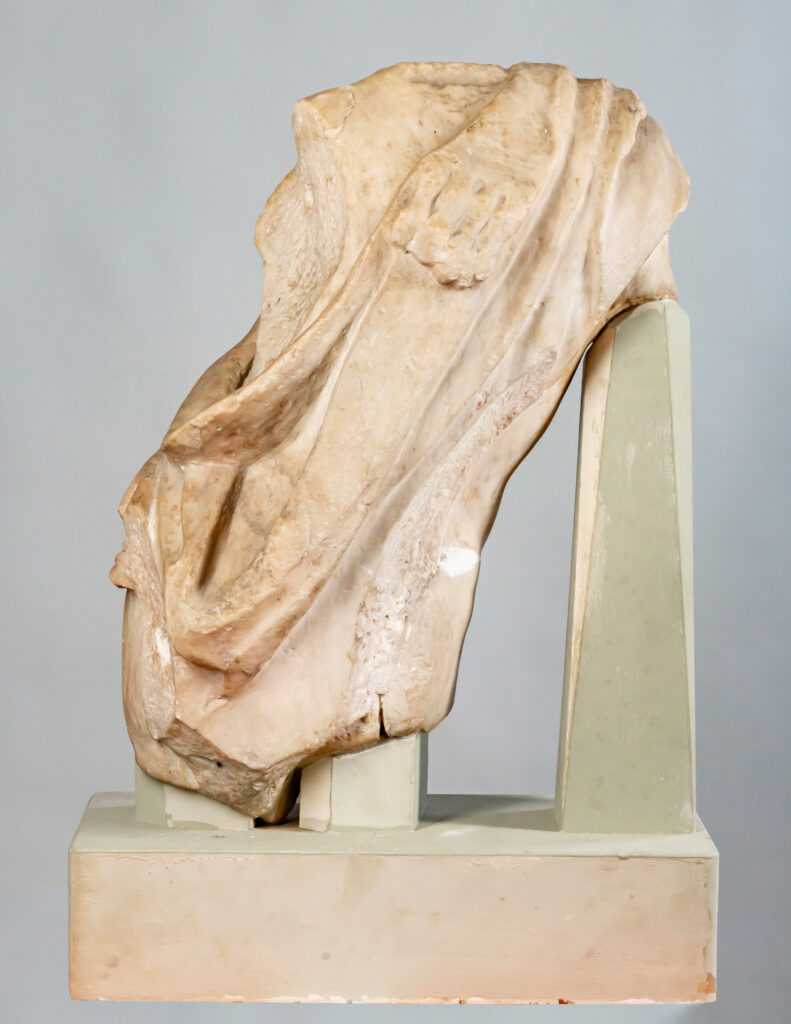
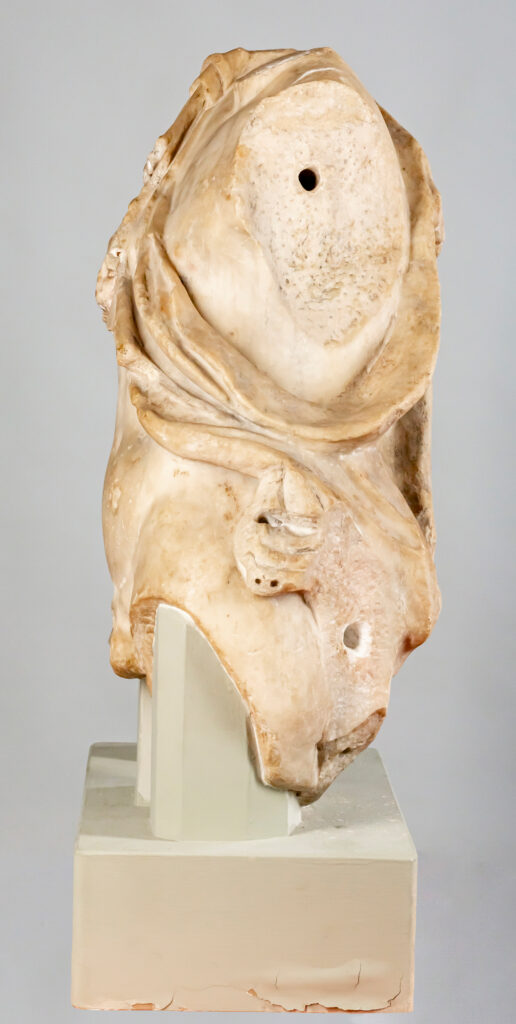
Gift of Edward Perry Warren, Esq., Honorary Degree 1926
1923.110This marble torso fragment is part of a Roman copy of a famed Greek sculpture type, the Leaning Satyr, which was thought to have been sculpted in bronze by the fourth-century Athenian sculptor Praxiteles. Despite its fragmentary nature, this object from Bowdoin’s collection is exemplary of the type. The drapery of the animal skin that the satyr wears from his right shoulder to left hip is finely and freely sculpted. Attachment points at the shoulders and hips reveal how the sculpture, like many other ancient marbles, would have been carved in separate pieces and assembled.
The ancient historian Pliny recorded Praxiteles’ statue as one of the “famous” sculptures of the ancient world, and the influential German art historian Johann Joachim Winckelmann wrote extensively about it. The sculpture type was as famous in antiquity as it is today; over one hundred ancient Greek and Roman copies that replicate the form with greater or lesser freedom exist. Perhaps the most famous of these is the Capitoline Faun, a second century Roman copy in the Capitoline, excavated in the eighteenth century at Tivoli. This sculpture provided the inspiration, and title, for Nathaniel Hawthorne’s The Marble Faun: Or, The Romance of Monte Beni (1860).
Greek artisans were renowned across the ancient world for accomplishments in sculpture, and contemporary and later cultures—including the Persians and Romans—coveted, collected, and copied their marble sculptures. The popularity of Greek sculpture among Roman patrons in the late Republic and Imperial periods, and the high regard in which Romans held earlier Greek art and literature, demonstrates an early example of antiquarian culture. By the third century BCE, wealthy Romans coveted and collected works of Greek art that demonstrated their cultural sophistication. Already regarded as the height of artistic achievement, sculptures in bronze and marble were especially sought out and were used by Romans to decorate their villas and gardens. Roman sculptors across the empire copied Greek models with greater or lesser degrees of exactitude, sometimes employing plaster casts and mechanical means, and other times copying well-known poses or statue groups with more freedom.
For centuries, Roman copies were valued mostly for what they reveal about lost original Greek sculptures. Today, a reassessment of the freedom and ingenuity with which Roman sculptors creatively copied and employed Greek models has led to reappraisal of the skill and ingenuity of Roman artisans. A fascinating historical phenomenon, the Roman vogue for ancient Greek statuary finds modern parallels in the popularity of marble copies and plaster casts of ancient sculptures in the nineteenth century.
Before 1923, collection of Edward Perry Warren; 1923, gifted to the Bowdoin College Museum of Art by Edward Perry Warren.
Collector
A testament to his impact as an influential twentieth-century American antiquities collector, Edward Perry Warren’s (1860–1928, H ’26) name is linked to hundreds of ancient objects housed in institutions across the United States, including more than five hundred works at the Bowdoin College Museum of Art alone.

